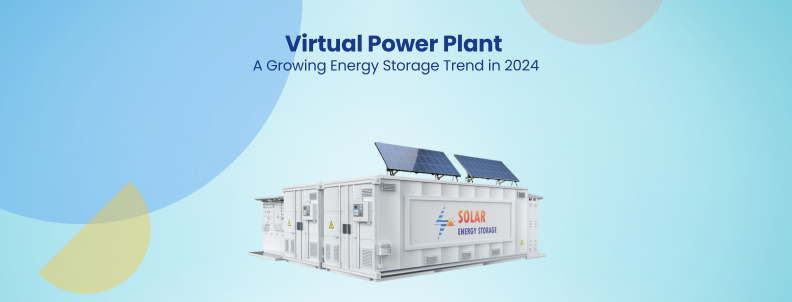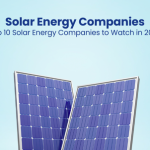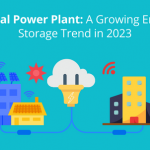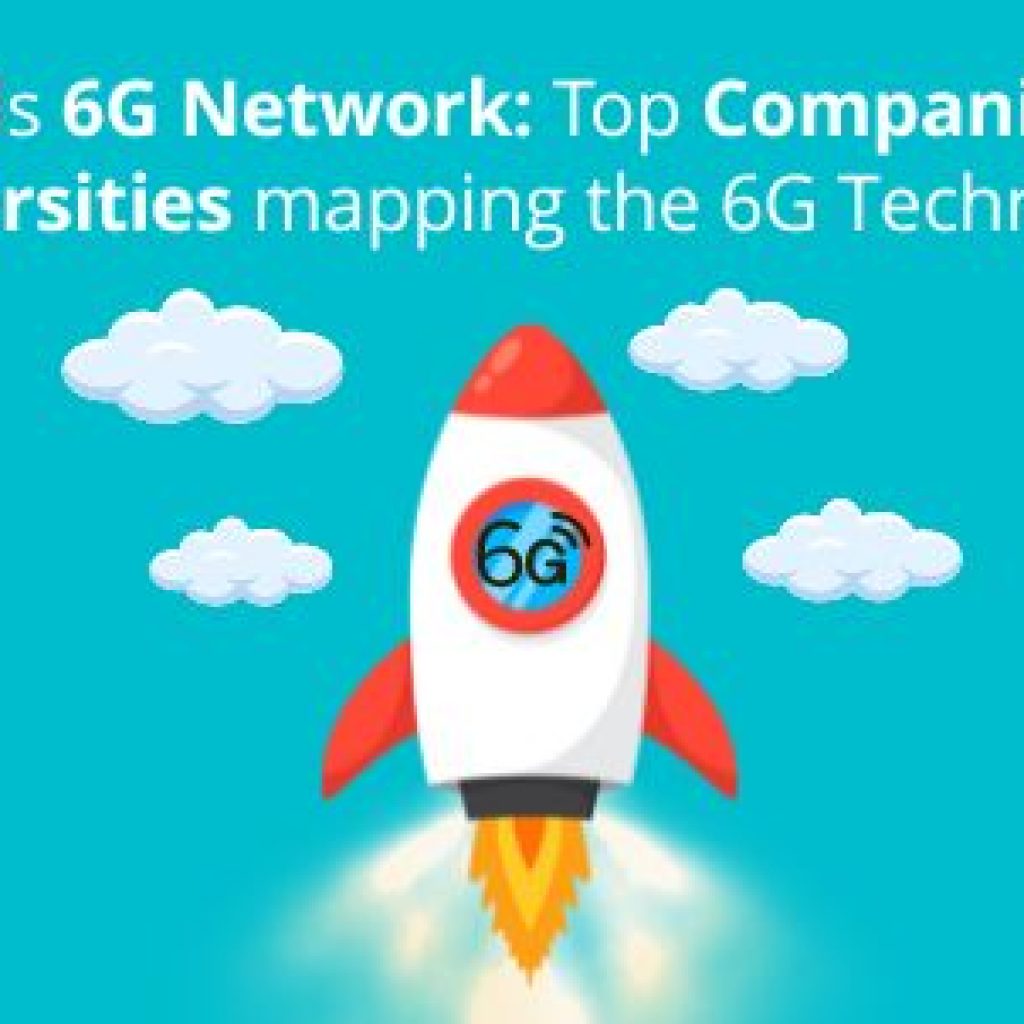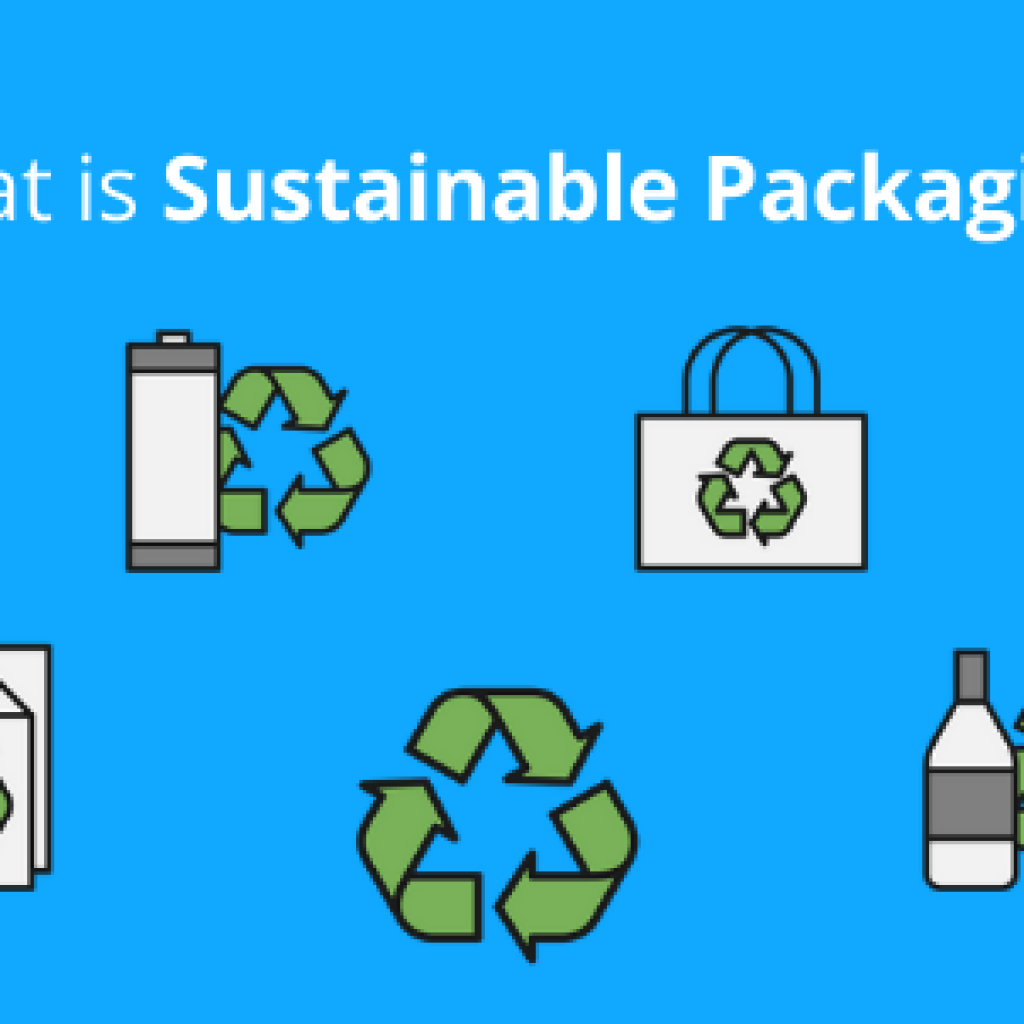The basis of a virtual power plant is that an electricity grid virtually connects hundreds, even thousands, of homes. These homes may already have solar and energy storage facilities installed. A virtual power plant can help use them collectively to act as a backup. It can be used when demand soars or to take excess power off the grid when needed.
A Virtual Power Plant (VPP) is a network of decentralized, medium-scale power-generating units such as wind farms, solar parks, and combined-heat-and-power units, as well as flexible power consumers and storage systems. VPPs can perform a wide range of activities depending on the market context.
The goal is to connect dispersed energy resources such as wind farms, solar parks, and Combined Heat and Power (CHP) units so companies may observe, forecast, optimize, sell, and trade them. A virtual power plant (VPP) aggregates the capability of various distributed energy resources (DERs) dispersed throughout the network.
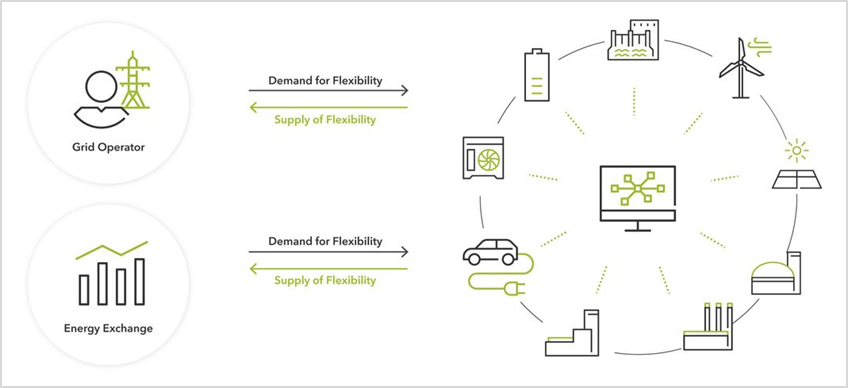
Virtual power plants can also provide ancillary services to grid operators. So they can assist in the maintenance of grid stability. Frequency regulation, load following, and providing operating reserve are examples of ancillary services. The primary use of these services is to keep the instantaneous balance of electrical supply and demand in place. In response to varying levels of consumer demand, power plants providing ancillary services must respond to grid operator signals to increase or decrease the load on the order of seconds to minutes.
Furthermore, it also establishes the requirements for incorporating renewable energy sources into markets. Individual small plants are typically unable to offer their flexibility on the power exchanges or balance services. This is due to either their generation profile’s excessive variation or the fact that they fall below the marketplaces’ minimum bid size.
A VPP can provide the same service and redundancy by combining the power of multiple units, and as a result, trade on the same markets as large central power plants or industrial users.
Virtual Power Plant Market Size
In 2021, the global virtual power plant market was valued at $0.88 billion and is expected to increase and reach $6.47 billion by 2028. Analysts anticipate the market to grow at an approximate CAGR of 32.8% during the forecast period 2022-2028. Factors such as the widespread adoption of novel technologies like cloud platforms and IoT applications in the power sector will have a significant effect on market growth.
Global Virtual Power Plant Market Size during 2021-2028 ($Billion)
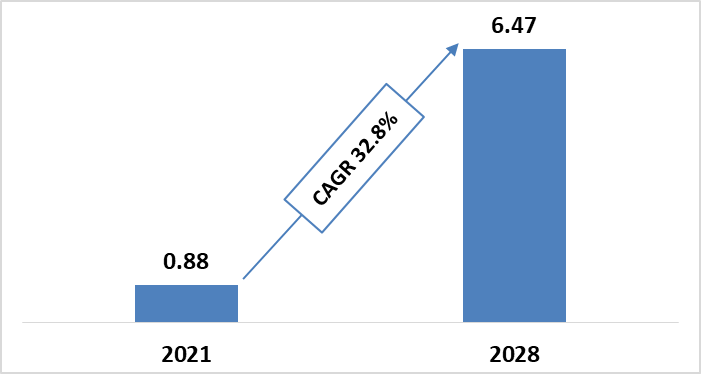
Tesla’s VPP in South Australia, maybe the biggest, exemplifies how these virtual power plants can benefit society. Australia was once known for its exorbitant electricity costs and shaky grid. That’s when Elon Musk and The South Australian government made a deal to install Powerwalls and solar panels in 50,000 homes, many of which belonged to low-income families.
Virtual power plants have other advantages, but they also have some challenges, which the article discusses in detail.
Virtual Power Plant Advantages
Contributing to the Creation of a More Stable Grid — To operate safely and efficiently, all power networks require energy generation and electricity to be balanced. If either side of this equation changes or varies, it can result in power outages and blackouts. Along with the major power plants, there are smaller, more agile, and flexible power plants (often gas) that can ramp up and down quickly. These plants operate in the Frequency Control Ancillary Services (FCAS) markets.
Plants in this market are sometimes paid to stand-by’ and be ready to turn on at a moment’s notice. VPPs can function in this sector since they can quickly discharge or charge power from the grid.
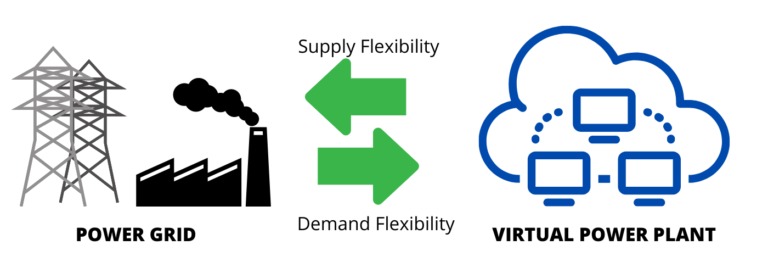
Reducing Emissions and Load Shifting — VPPs enable real-time movement of residential, commercial, and industrial loads based on price signals to provide demand-side management services to grid operators. When done correctly, this will minimize the demand for high-emitting power plants while lowering carbon emissions.
Virtual Power Plant Challenges
Inadequate Infrastructure and Huge Costs — Advanced communication technologies, such as an energy management system (EMS), which enables the observation, management, and control of different energy devices, must be included in the high-quality infrastructure required for the building of VPP. Integrating current technologies and processes into a VPP requires significant investment and a highly qualified workforce. As a result, inadequate infrastructure and the increased costs associated with new technologies are projected to limit market growth over the forecasted period.
Stabilizing Virtual Power Plants — Some countries have already detected a negative impact on grid stability and electrical quality. The grid is gradually becoming an active distribution network as various alternative energy sources, particularly renewable ones, are developed. In this situation, procuring the stability provided by ancillary services becomes highly significant. The providers of virtual power plants (VPPs) encounter a challenging situation because they want to gain from the shift to renewable energy while retaining their capacity to provide the service accurately and cost-effectively.
Now, let’s look at the major companies that are tackling these challenges and making virtual power plants a success.
Interested in the Innovation Trends in Energy Storage? Here’s an exhaustive report for you. Get this energy storage trend report in your inbox by filling out the form below:
Virtual Power Plant Companies
1. ABB
ABB is a leading worldwide technology firm that energizes social and industrial transformation to achieve a sustainable future.
The firm’s virtual power plant (VPP) is not a traditional physical power plant but a network of sustainable energy generation systems and energy storage devices – an integrated virtual platform that manages power generation through a distributed power-management system.
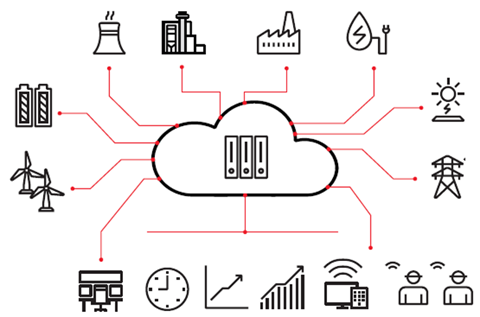
ABB’s Energy Management suite, AbilityTM OPTIMAX®, enables power players to thrive in the face of new opportunities provided by the bidirectional flow of energy and information. This management suit for Virtual Power Plants combines and optimizes decentralized energy resources to create a virtual power plant. Users can then profitably buy or sell energy in wholesale markets or deliver energy as a subscription service.
Important Collaborations
Hitachi ABB Power Grids has been chosen to implement its revolutionary energy storage technology to enable the development of Singapore’s first Virtual Power Plant (VPP) project in 2021. The project began in 2019 and is being developed by the Energy Research Institute at Nanyang Technological University, Singapore (ERI@N),]. It is being co-funded by Singapore’s Energy Market Authority (EMA) and Sembcorp Industries.
The e-meshTM PowerStoreTM battery energy storage system (BESS) from Hitachi ABB Power Grids is a vital component of the VPP infrastructure. It enables grid stability by balancing intermittent generation with smart and dynamic loads.
2. Next Kraftwerke
Next Kraftwerke, headquartered in Germany, operates a large-scale Virtual Power Plant (VPP). The VPP of the corporation combines around 13,000 medium- and small-scale power-producing and consuming units. It includes, for example, biogas, wind, and solar generators.
The company’s VPP NEMOCS is a modularly designed software-as-a-service (SaaS) solution.
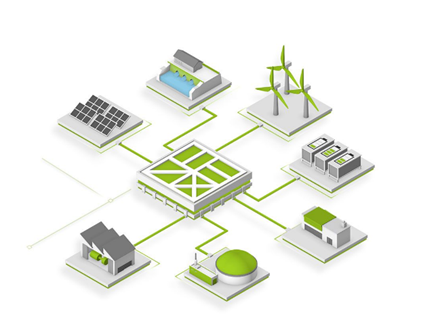
The software allows users to connect, monitor, and operate distributed power producers, consumers, and storage systems. As a result, it provides a diverse set of commercial opportunities to RES portfolio operators, aggregators, utilities, grid operators, and energy traders.
Important Collaborations
Next Kraftwerke and Toshiba Energy Systems & Solutions Corporation announced the formation of a joint venture in 2020. “Next Kraftwerke Toshiba Corporation” is a Virtual Power Plant (VPP) service provider in Japan that allows third parties to put up their VPP.
Using VPP technology, the new company intends to enable others to provide balancing services for owners of renewable energy assets and aggregators.
3. Flexitricity
Flexitricity, based in Edinburgh, currently manages a 500MW fully flexible virtual power plant. The VPP assists National Grid ESO and Distribution Network Operators in balancing changes in renewable energy and managing supply security.
The 500MW virtual power plant is made up of flexibility from various assets owned by customers around the United Kingdom. This includes NHS hospitals, universities, local governments, district heating schemes, supermarkets, commercial farmers, and manufacturers.
Important Collaborations
In Jun 2022, Flexitricity and Gore Street Capital, London’s first listed energy storage fund, partnered to optimize an initial 155MW of battery energy storage systems (BESS). The agreement covers six sites and builds on the recent collaboration between Flexitricity and Gore Street Capital.
In Aug 2022, Flexitricity and Thrive Renewables, a Bristol-based renewable energy investment firm, entered into an agreement for a 20MW battery energy storage system (BESS).
Flexitricity’s 24/7 control room in Edinburgh will monitor and dynamically optimize the lithium-ion BESS site. The asset will be able to operate in various markets, including frequency response, wholesale traded power, the Balancing Mechanism, and emerging flexibility services.
Moving on to the startups competing with these companies in the Virtual Power Plant market.
4. Siemens
Siemens, headquartered in Munich, Germany, operates in more than 200 countries. Its diverse portfolio includes industry, energy, healthcare, and infrastructure solutions. The company’s foray into VPPs addresses the challenges posed by the increasing integration of renewable energy sources into the power grid.
Siemens’ advanced software platforms and smart grid technologies enable real-time monitoring, optimization, and control of energy resources.
Siemens’ Decentralized Energy Management System (DEMS) is a core component of its VPP solutions. This advanced energy management system aggregates and optimizes Distributed Energy Resources (DERs), enabling efficient and flexible energy supply management. DEMS uses predictive analytics and machine learning to forecast energy production and consumption, ensuring optimal performance and grid stability.
SIESTORAGE is an energy storage solution by Siemens that integrates seamlessly with VPPs. It enhances grid stability by storing excess energy generated from renewable sources and discharging it when demand is high. SIESTORAGE supports peak shaving, load leveling, and backup power, making it a versatile addition to Siemens’ VPP offerings.
Siemens also offers its flagship smart grid management software, Spectrum Power™, and Gridscale X. These provide comprehensive tools for monitoring and controlling power grids and facilitate the integration of VPPs into existing grid infrastructure.
The company offers a range of products and services for Energy automation and smart grid, Low-voltage power distribution, Medium–voltage–power distribution, Grid Software, and eMobility. A few examples are SCIAM 8, SION, SIPROTEC, etc.

The company’s demand response services enable businesses to participate in VPPs by adjusting their energy consumption in response to grid signals. This service provides financial incentives to participants and helps balance supply and demand, enhancing grid reliability and reducing the need for additional generation capacity.
Important Collaborations
In July 2020, Siemens partnered with Sinebrychoff, a leading Finnish brewery, to implement a VPP to enhance energy efficiency and reduce CO2 emissions at the brewery.
The company is also a key player in the VPP4Islands project, which aims to promote decentralized and sustainable energy systems on European islands. This initiative, part of the EU’s Green Deal strategy, integrates renewable energy sources and creates flexible, interoperable VPPs. Schneider Electric, Aix Marseille University, Formentera, and FTK are a few names among the 19 partners.
5. Generac Holdings Inc.
Generac Holdings Inc. operates within the energy and power systems industry, serving residential and commercial markets. The company’s extensive product lineup includes home standby generators, portable generators, industrial generators, and solar + battery storage systems.
Generac’s Virtual Power Plant (VPP) solutions leverage various advanced technologies to enhance grid stability and optimize energy usage.
At the core of Generac’s VPP offerings is the PWRcell system, a solar + battery storage solution that can form part of a VPP by integrating with the grid to provide backup power and reduce demand during peak times. The PWRcell system features a robust lithium-ion battery with a storage capacity ranging from 8.6 kWh to 34.2 kWh, depending on the configuration. It can be combined with solar panels to harness renewable energy.
Generac’s Concerto platform plays a critical role in their VPP services. This Distributed Energy Resource Management System (DERMS) enables real-time orchestration and control of distributed energy resources (DERs). It helps utilities and energy retailers manage the complexities of grid services by providing visibility, monitoring, and control of DERs. Concerto supports various grid services, including demand response, frequency regulation, and energy arbitrage, ensuring optimal performance and grid stability.

In collaboration with utilities like Southern California Edison (SCE), Generac’s VPP programs, such as the Power Flex initiative, allow customers to earn incentives by exporting stored solar energy back to the grid during high-demand periods.
Generac’s Smart Grid Ready technology is embedded in their home standby generators, commercial and industrial generators, and PWRcell systems. These devices can be remotely managed to contribute to grid stability.
Important Accquisitons
In 2019, Generac acquired Pika Energy, a provider of smart energy management systems, and Neurio Technology, known for its energy monitoring solutions, to strengthen its portfolio in residential energy solutions.
In 2020, Generac acquired Enbala Power Networks, a virtual power plant (VPP) software technology company, to bolster its grid services capabilities. This acquisition enhanced Generac’s ability to manage distributed energy resources and support grid stability.
In 2021, Generac acquired Deep Sea Electronics, a UK-based manufacturer of generator controls, for $373 million and Ecobee, a Canadian smart thermostat company, for $770 million. These acquisitions expanded Generac’s product offerings in energy management and home automation.
Additionally, Generac acquired Tank Utility, an IoT propane tank monitoring service, and Chilicon Power, a manufacturer of microinverters and monitoring solutions for solar energy systems.In 2022, Generac further expanded its industrial IoT capabilities by acquiring Blue Pillar, an industrial IoT platform that provides connectivity solutions for monitoring and controlling distributed energy resources. This acquisition aligns with Generac’s strategy to enhance its energy technology solutions for commercial and industrial applications.
Virtual Power Plant Startups
1. Limejump
Limejump, based in the United Kingdom, is a technology platform that manages a large renewable energy network. Limejump’s portfolio provides clean energy to businesses and homes by utilizing renewables and stored energy when required to meet the demands.
Limejump connects and manages 100% renewable energy through the intelligent control of renewable generators such as wind turbines and solar panels.
The platform is connected to flexible and renewable assets by installing the company’s proprietary IoT hardware, sending and receiving telemetry data, and acting on real-time instructions.
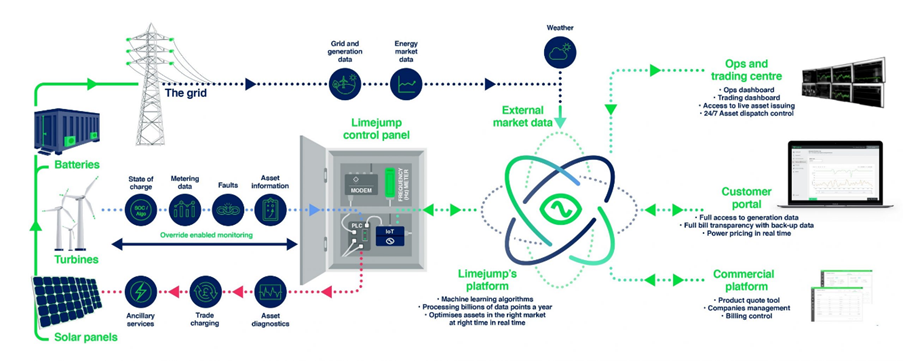
Important Collaborations
In 2017, Limejump and Anesco collaborated to connect 185MW market battery storage capacity. Limejump would operate the portfolio in the balancing and flexibility markets, combining the granular response speed of batteries with other distributed generation assets to maximize flexibility.
2. H Energy
H Energy, headquartered in Seoul, provides virtual power plants by combining and trading solar power generation and ESS resources. Solar power plants reduce monitoring, transaction, and settlement costs through the virtual power plant platform, and ESS can maximize electricity bill savings.
By combining and trading solar power generation facilities and ESS resources into one virtual power plant, the company shares power generation profits, electricity bill savings, and incentives to participate in the power brokerage market.
3. Evergreen Smart Power
Evergreen Smart Power offers renewable energy through a virtual power plant. The company’s software platform integrates and manages a wide range of energy technologies in real time, responding to grid conditions to increase or decrease electricity consumption or generation. Traditional gas turbines cycle on and off in response to real-time energy supply and demand data—this aids in grid stabilization. The company does the same but with many small domestic devices spread across the country. Hence, the platform is referred to as a Virtual Power Plant (VPP).
Important Collaborations & Acquisitions
In 2020, Evergreen Energy expanded with the acquisition of Homely Energy, a renewable home heating start-up. Homely Energy has created a smart thermostat designed specifically for heat pumps. Customers benefit from app-based heating control as well as cost-saving optimization. (Source)
4. Naak
Naak, based in California, is a platform for energy cloud services that combines solar, storage, load management, and energy automation to enable digital power transactions for residential and commercial applications. (Source)
Naak’s native Virtual Power Plant (VPP) capabilities allow consumers to be active participants in serving their needs. The Naak platform can control individual loads (appliances) at each Distributed Energy Resource (DER), allowing for increased system optimization, lower energy consumption across the network, and future-proofing customer savings. (Source)(Source)
5. Energiekoppler
Energiekoppler, headquartered in Germany, is a provider of The Flexibility Plant, a new generation of virtual power plants. It is a network and marketing aggregator for decentralized energy systems (generators, storage, and consumers) down to the smallest system.
The Flexibility Plant is a standardized, automated, and technology-independent system solution. This system, which consists of the components swarmBOX and swarmHUB, resolves the critical problems of general virtual power plants.
Conclusion
Swell Energy, a home energy startup, recently received funding of $120 million led by Softbank and Greenback. The funding will help Swell Energy develop 600 MWh of VPPs by deploying and aggregating 26,000 energy storage systems in homes and businesses across the United States.
Its CEO, Suleman Khan, previously worked at Tesla. He left the company in 2015 to co-found the cleantech firm. He admitted that in the earlier days of the startup.
According to Khan, there was little talk about home batteries, let alone virtual power plants among utility companies.
They are currently seeing a high demand from utility companies to establish virtual power plants in places like California, Hawaii, and the Northeast of the United States.
“We’re seeing this interesting flip. It used to be that we were riding the solar coat-tail. Wherever there were solar panels, we would step in and offer batteries. Now we’re seeing batteries pull in demand for solar. And as we get to 2024, I think you will see more utilities in the Southeast and Northwest adopt virtual power plants. It’s like an imperfect storm, where potential outages and a capacity shortage have come together to create this massive need for new dispatchable energy services.”, said Suleman Khan, CEO of Swell Energy.
Additionally, there is a growing demand for dispatchable energy in the Midwest, Southeast, and Texas. There is a high demand for home batteries worldwide, even though there has not been much demand for solar in the past. We expect multiple collaborations between tech giants and industry leaders in the coming years. It’ll be interesting to see the startups making a place for themselves amidst these collaborations.
GreyB specializes in helping businesses navigate the complexities of innovation and intellectual property.
Partnering with a team like GreyB’s ensures you uncover growth opportunities, safeguard your IP, and stay ahead in today’s competitive landscape. Our deep expertise in technology scouting, competitive analysis, and market research empowers you to make informed decisions with confidence.
We don’t just offer insights—we provide actionable strategies tailored to your unique needs, ensuring your innovation efforts are protected and strategically aligned with the future.
At GreyB, we understand the complexities of staying ahead in today’s innovation landscape. We’re passionate about treating your challenges as our own, and our mission is to uncover the most valuable opportunities for your business.
To see how we’ve helped other companies thrive, visit our case studies page or reach out to explore how we can collaborate on your next big move.
Authored By: Vipin Singh, Market Research
Edited By: Nidhi, Marketing

